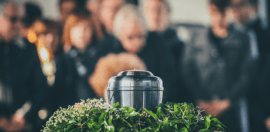Six points to consider in providing flood recovery support

Credit: Axedale Our Town Our Future
17 October 2022 at 5:16 pm
It’s a marathon, not a sprint, writes the CEO of the Foundation for Rural & Regional Renewal, Natalie Egleton.
Yet again, Mother Nature has demonstrated her power, unleashing heavy rainfall across the east coast, particularly in central Victoria, northern Tasmania and western NSW. While some rivers and streams have already peaked, leaving significant damage in their wake, others are still rising and many communities are on tenterhooks, with more rain forecast across many of these areas later in the week.
Communities are doing what they always do – supporting one another and trying their very best to prepare and mitigate the impacts, then helping one another in the immediate aftermath and beyond. Indeed, many of our team have spent much of the last week either moving their own belongings to safety, helping friends and family do the same, or sandbagging in their local community. While most of our team has so far escaped the direct impacts, we all know someone that hasn’t been as fortunate.
Over FRRR’s 20 plus years of working in remote, rural and regional communities, we’ve seen our fair share of these events – both personally and in our capacity as a funder. So, I wanted to share a few things we’ve learnt along the way for anyone in a position to help who might be wondering what they should be doing right now.
- Recovery will be a marathon, not a sprint. That may seem either obvious, or trite, but this event is still unfolding, and its impacts will continue to evolve – for years to come. People have lost their possessions, and with many crops completely under water and livestock lost, the economic impacts in these agricultural-dependent regions will no doubt be significant and community infrastructure is likely to be seriously damaged.That’s why we advocate for committing 40 per cent of any donations to emergency assistance and response (the first year), and 60 per cent for medium to long term recovery (providing support after the media and emergency support has disappeared).
FRRR’s focus is on the medium to long-term recovery – in fact, we are still supporting communities affected by the 2009 Victorian bushfires. For anyone wanting to partner with us, we’d welcome your contribution to one of three funds:
- Disaster Resilience and Recovery Fund – a perpetual fund, where donations are invested and we draw earnings annually to support these communities, and others affected by future disasters, through our grants and support programs in the years to come.
- Central Victoria fund –any funds donated will be invested and again, returns specifically set aside for and directed to Central Victoria recovery projects and grants.
- Strengthening Rural Communities: Prepare & Respond – to support grants that are open all year round and announced quarterly. This program is flexible and ready to support community organisations as and when they need.
- Listen to the locals. They are best placed to know what’s going to make the biggest difference – and just as importantly, they know when the time is right for that support. Often, when you see the immediate effects of a natural disaster, it’s tempting to invest in infrastructure – it’s visible and often an ‘easy’ fix. However, in our experience it is the community services that are often in most demand six months right through to 10 years after a major disaster. That doesn’t just mean bringing in extra counsellors – although that might be required. It is critical to build the capacity of grassroots groups that so often facilitate and coordinate longer term recovery projects– groups such as community arts groups, landcare groups, Traditional Owners, chambers of commerce, early years providers, community centres & neighbourhood houses, and of course the likes of youth chambers, Men’s Sheds, CWAs, and Agricultural Societies.
Organisations that are on the ground will be well-placed to direct funds where they are needed, so check in with local community foundations and the local Council to see what they recommend. In Victoria, we suggest you check in with groups like:
- Tomorrow Today Foundation – Benalla
- Border Trust – Albury Wodonga Region Community Foundation
- Greater Shepparton Foundation
- Into Our Hands – North East Victoria
- Neighbourhood Houses
- Donate money, not things. Right now, what’s needed is immediate relief – food, clothing, whitegoods etc to get people back on their feet – but whatever you do, please don’t send those things. That causes more pressure for communities, as it means they need to find somewhere to store the goods and people to sort them – and even then, there’s no guarantee that the items you donate are what they actually need. Instead, consider giving to organisations like these, who can buy what is needed, when it’s needed:
- Collaborate to avoid duplication. Collaboration is critical. It needs to happen at the community level and, importantly, among all those who seek to support the impacted communities. By working together and using each other’s strengths and skills more effectively, we can avoid diluting effort and adding burden to those affected. So, before you launch an appeal, look at who else is already hosting one. Partner with them to amplify your impact. Think about where those affected will naturally go looking for support – so they can focus their energies on applying to one place and having just one conversation in seeking philanthropic support, rather than overwhelming them with a number of different processes. Similarly, if you are looking to volunteer or contribute physically, look at what groups like the local Shire is doing or BlazeAid, who will no doubt already be making plans to get crews on the ground, when it’s safe to do so.
- Build Back Better. As tragic as these events are, they are often a rare opportunity to renew and enhance, not just rebuild. In many cases, just replacing what was already there, isn’t the best outcome for the community. While it’s difficult to have this perspective while we’re still in the midst of a disaster, if you are setting up a grant program make sure it allows people to review community needs and create something that will sustain and support the community into the future and respond to new and emerging needs – not just replace what was there.
- Invest in the future. Research that FRRR commissioned, in partnership with Resilience NSW and undertaken by the University of Sydney, into the ‘Get Ready Disaster Resilient: Future Ready (DR:FR) pilots project’ highlighted the importance of investing in building community led resilience. It identified seven key factors – communication, networks, self-organising systems, decision-making, information, resources, tools and support and inclusion that build resilience. These are the things that need investing in for the long-term, outside of the cycle of relief and emergency response, so that sustainability is built before the next disaster allowing communities to better respond and recover.
FRRR is all about partnering to support remote, rural and regional communities, so if you’d like to know more about any of these thoughts, or discuss how we might work together, I’d love to hear from you.







